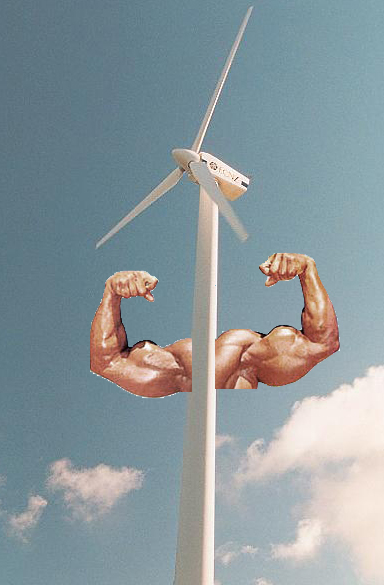 With the economy in the pooper, and oil prices going down, you might think that renewable energy would once again be regulated to the “also ran” category. But NO! The U.S. wind energy industry installed 1,389 megawatts (MW) this quarter, bringing to 4,204 MW the total of wind power projects completed in what is expected to be another record year, the American Wind Energy Association announced today in its 3rd quarter market report.
With the economy in the pooper, and oil prices going down, you might think that renewable energy would once again be regulated to the “also ran” category. But NO! The U.S. wind energy industry installed 1,389 megawatts (MW) this quarter, bringing to 4,204 MW the total of wind power projects completed in what is expected to be another record year, the American Wind Energy Association announced today in its 3rd quarter market report.
With even more reported under construction, the industry is on track to surpass the banner year of 2007, when 5,249 MW were installed, with a total of about 7,500 MW this year (7,500 MW would generate enough electricity to power the equivalent of about 2.2 million homes).
In welcome news for the economy, the industry is also aggressively expanding its manufacturing base in the U.S., creating jobs and fostering investment and growth even in a difficult financial climate. AWEA’s report tallies the opening of eight new wind turbine component manufacturing facilities this year; the expansion of nine facilities; and the announcement of an additional 19 facilities. As a result of recent manufacturing investment, AWEA estimates, the share of domestically made components in wind turbines has risen from about 30% in 2005 to 50% today. The new facilities will create an estimated 9,000 jobs.
“The convenient truth here is that wind power provides a stimulus for our economy, as well as a climate change and energy security solution,†said AWEA Executive Director Randall Swisher. “The market, in spite of all its turmoil, clearly points to wind power as one of the most attractive energy options available today. But if we are to keep this momentum going, the new President and Congress will need to put in place what the majority of the American people support but the country still lacks: a long-term renewable energy policy.â€
Highlights of the report/project installations:
Texas, reaping the benefits of its excellent wind resource and a proactive transmission expansion policy, added 693 MW – the most wind power capacity of any state in the 3rd quarter. Texas moved into the 6 GW category, which propels it into the ranks of global leaders. Only Germany, India and Spain had more wind energy capacity installed at the end of last year.
West Virginia: The state with the fastest wind power capacity growth was West Virginia, which more than tripled its existing capacity with the addition of a 164-MW project; another 100-MW project is scheduled to come online in West Virginia by the end of the year. Utah added its first multi-turbine project, the 9-turbine Spanish Fork project. The Dakotas: Acciona Energy, a wind turbine manufacturer, brought its first U.S. turbines online at a 120-turbine project straddling the North Dakota/South Dakota border.
Highlights of the report/manufacturing investment:
In August, Vestas announced plans to further expand its American manufacturing presence with new wind turbine blade and nacelle assembly factories in Brighton, Colo. (the nacelle is the structure that sits at the top of a wind turbine tower. It can be as large as a school bus, and houses the generator). When fully operational in 2010, the blade factory is expected to employ 650 people and the nacelle factory is expected to employ an additional 700.
In September, TPI Composites opened a new production facility in Newton, Iowa, for wind turbine blades for the U.S. market. At full capacity, TPI Iowa plans to employ 500 associates, giving the Midwestern city an economic boost.
Based on projections for the remainder of the year, 2008 will mark the fourth year in a row that new wind capacity installations have set records, but that is not expected to continue next year. With some 8,000 MW already under construction for completion this year or next, the wind industry remains relatively strong. But because of the late extension of the wind production tax credit and the evolving financial crisis, new construction starts are expected to slow in 2009.
The steps that the new Administration and Congress take to promote renewable energy will therefore be critical. Long-term, stable policies are needed to take full advantage of the industry’s role in stimulating job creation and economic development, and to support growth of domestic turbine and component manufacturing, which will be one of the leading sources of new manufacturing jobs in the 21st century. These policies include a long-term extension of the wind production tax credit (the recent financial rescue package extended the credit for one year only), a federal renewable energy standard, strong climate change legislation, and investment in new transmission infrastructure.
The report is available here (pdf).